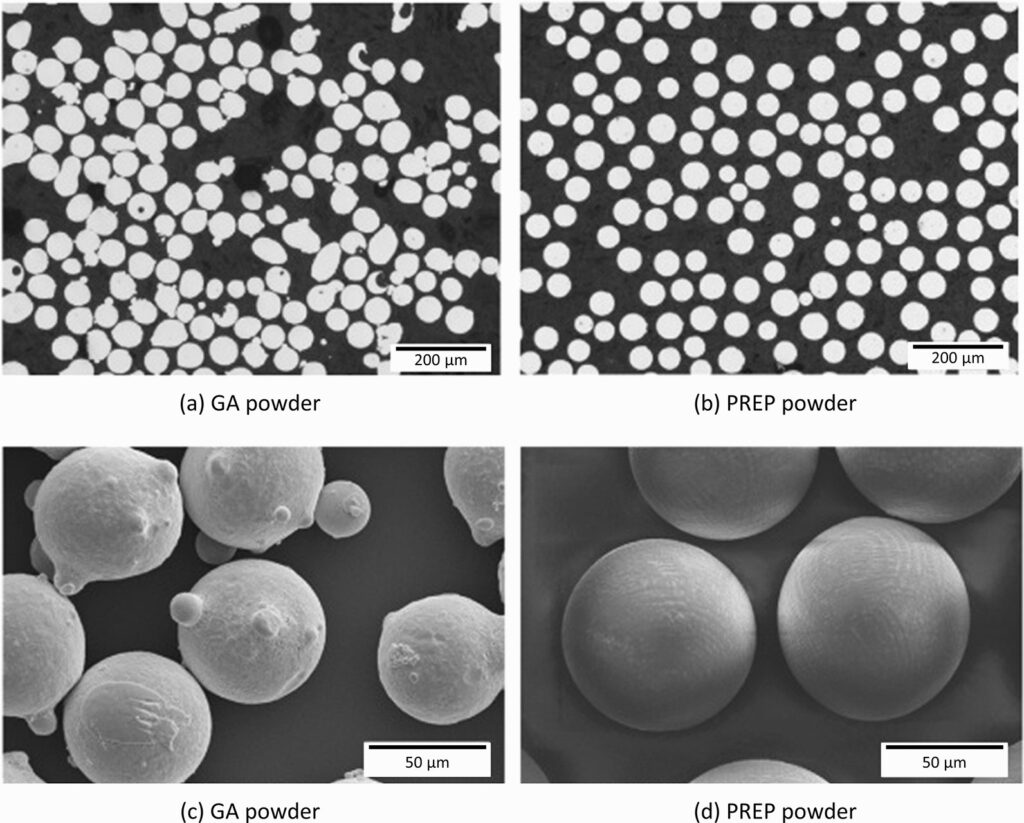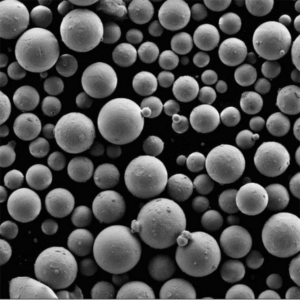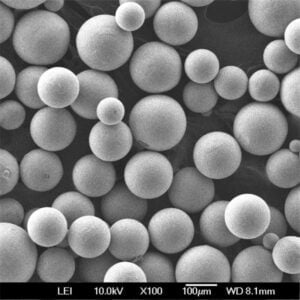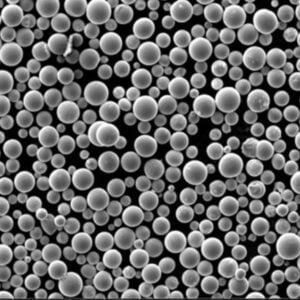
Hastelloy B Powder: The Ultimate Alloy for Unmatched Industrial Performance
Low MOQ
Provide low minimum order quantity to meet different needs.
OEM & ODM
Provide customized products and design services to meet unique customer needs.
Adequate Stock
Ensure fast order processing and provide reliable and efficient service.
Customer Satisfaction
Provide high quality products with customer satisfaction at the core.
share this article
Table of Contents
When it comes to high-performance alloys, Hastelloy B powder is a material that stands out due to its exceptional resistance to highly corrosive environments, particularly in reducing atmospheres. Whether you’re working in chemical processing, petrochemical industries, or pharmaceuticals, this nickel-molybdenum alloy is designed to withstand some of the harshest conditions, making it a top choice for critical industrial applications.
In this comprehensive guide, we’ll dive deep into everything you need to know about Hastelloy B powder—its composition, properties, applications, and much more. By the end of this article, you’ll be able to understand why Hastelloy B is revered for its corrosion resistance and thermodynamic stability, and you’ll have all the tools you need to decide if it’s the right material for your next project.
Overview of Hastelloy B Powder
Hastelloy B powder is part of the Hastelloy family of alloys, which are recognized for their ability to perform in extremely corrosive environments. What sets Hastelloy B apart is its improved resistance to hydrochloric acid, sulfuric acid, and other non-oxidizing acids. It is particularly effective in reducing atmospheres, where it resists pitting, stress-corrosion cracking, and other forms of localized attack.
Some of the standout features of Hastelloy B powder include:
- Exceptional resistance to a wide range of non-oxidizing acids.
- High tensile strength and durability in harsh environments.
- Good thermal stability, even at elevated temperatures.
- Fabrication versatility, whether for additive manufacturing or traditional metal forming processes.
This alloy is widely used in the chemical processing industry for creating components like pipes, valves, pumps, and reactor vessels that are exposed to corrosive chemicals. Its ability to withstand hydrogen chloride, sulfuric acid, and various other aggressive chemicals makes it a go-to material for industries that demand high reliability and durability.
Composition and Properties of Hastelloy B Powder
The performance of Hastelloy B powder is largely due to its unique chemical composition, which is engineered to offer maximum resistance to non-oxidizing acids. In this section, we’ll break down the key elements that make up Hastelloy B and explain how each component contributes to its overall performance.
Chemical Composition of Hastelloy B Powder
| Element | Weight Percentage (%) | Role in the Alloy |
|---|---|---|
| Nickel (Ni) | 60-65 | Forms the base of the alloy, providing resistance to non-oxidizing environments. |
| Molybdenum (Mo) | 28-32 | Enhances the alloy’s resistance to pitting and crevice corrosion in reducing environments. |
| Iron (Fe) | 2-6 | Strengthens the alloy without compromising its corrosion resistance. |
| Chromium (Cr) | 1-3 | Aids in oxidation resistance at higher temperatures, though kept low to avoid sensitivity to reducing acids. |
| Carbon (C) | ≤ 0.02 | Reduces the risk of intergranular corrosion, especially during welding. |
| Cobalt (Co) | ≤ 1.0 | Often a residual element but adds to the alloy’s overall strength and thermal stability. |
| Silicon (Si) | ≤ 0.10 | Minimizes the risk of oxidation during manufacturing, though kept low to avoid embrittlement. |
| Manganese (Mn) | ≤ 1.0 | Enhances the alloy’s ability to resist sulfide corrosion and improves the material’s workability. |
As you can see, the high concentration of nickel and molybdenum is what gives Hastelloy B powder its superior resistance to reducing acids like hydrochloric acid and sulfuric acid.
Mechanical and Thermal Properties of Hastelloy B Powder
To truly understand why Hastelloy B powder is so effective in extreme environments, it’s essential to consider its mechanical and thermal properties. These properties make the alloy not only resistant to corrosion but also robust in applications involving high temperatures and mechanical stress.
| Property | Value/Description |
|---|---|
| Density | 9.24 g/cm³ |
| Melting Point | 1330°C – 1380°C (2426°F – 2516°F) |
| Ultimate Tensile Strength | 760 MPa (110 ksi) |
| Yield Strength | 345 MPa (50 ksi) |
| Elongation at Break | 40% |
| Hardness | 80-85 HRB (Rockwell B) |
| Thermal Conductivity | 9.5 W/m·K |
| Creep Resistance | Excellent creep resistance, especially in high-stress and high-temperature environments. |
| Oxidation Resistance | Good resistance to oxidation in moderate temperatures, though primarily designed for reducing atmospheres. |
The combination of these properties makes Hastelloy B powder an excellent choice for applications where both mechanical strength and corrosion resistance are critical. Its creep resistance ensures that components maintain their structural integrity even after long-term exposure to high temperatures and mechanical stress.
Applications of Hastelloy B Powder
Given its unique properties, Hastelloy B powder is widely used in industries where corrosion resistance and thermal stability are of paramount importance. Below is a breakdown of the most common applications of Hastelloy B powder across different sectors.
Common Applications of Hastelloy B Powder by Industry
| Industry | Application |
|---|---|
| Chemical Processing | Used in reactors, pipes, heat exchangers, and valves exposed to hydrochloric acid and sulfuric acid. |
| Petrochemical | Ideal for equipment handling hydrogen chloride, organic acids, and other corrosive chemicals. |
| Pharmaceutical | Employed in reaction vessels and piping systems where purity and corrosion resistance are critical. |
| Power Generation | Utilized in boilers, turbine components, and heat exchangers exposed to high-temperature and corrosive environments. |
| Aerospace | Applied in engine components, fuel systems, and exhaust systems where corrosion and heat are factors. |
Why Hastelloy B is Ideal for These Applications
The reason Hastelloy B powder is so widely used in industries like chemical processing and pharmaceuticals is its ability to resist non-oxidizing acids that would corrode other materials. For instance, in chemical processing plants, where equipment is often exposed to hydrochloric acid or sulfuric acid, Hastelloy B offers long-lasting protection, reducing the need for frequent maintenance or replacement.
In the petrochemical industry, where components are exposed to a range of corrosive chemicals, Hastelloy B powder ensures that pipes, valves, and heat exchangers maintain their integrity, even under high-pressure and high-temperature conditions. This makes it a more cost-effective option in the long run, despite its higher upfront cost.
Specifications, Sizes, and Standards for Hastelloy B Powder
When sourcing Hastelloy B powder, it’s important to ensure that the material meets certain specifications and standards to guarantee its performance in your application. Below, we outline the most relevant specifications and available sizes for Hastelloy B powder.
Specifications and Standards for Hastelloy B Powder
| Specification/Standard | Details |
|---|---|
| UNS Number | N10001 |
| AMS Standards | AMS 4770, covering nickel-molybdenum alloys for high-temperature and corrosive environments. |
| ASTM Standards | ASTM B333, B335, and B564, which outline material specifications for nickel-based alloys. |
| ISO Standards | ISO 15156, for materials used in sour gas environments. |
| Powder Particle Size | 15 to 45 microns, typically used for additive manufacturing and metal injection molding. |
| Density | 9.24 g/cm³ |
| Melting Range | 1330°C – 1380°C (2426°F – 2516°F) |
Available Sizes and Forms of Hastelloy B Powder
Hastelloy B powder is available in different forms, depending on the application. Here are the most commonly available sizes and forms:
| Form | Available Sizes |
|---|---|
| Powder | Particle sizes typically range from 15 to 45 microns, ideal for additive manufacturing and metal injection molding. |
| Rod/Bar | Available in diameters ranging from 0.5 to 10 inches, used for valves, piping, and large components. |
| Sheets and Plates | Available in thicknesses ranging from 2 mm to 50 mm, used for reactor vessels, heat exchangers, and more. |
Suppliers and Pricing of Hastelloy B Powder
Finding reliable suppliers for Hastelloy B powder is crucial to ensure that you get high-quality material that meets all industry standards. Below is a list of some trusted suppliers and the estimated pricing for Hastelloy B powder.
Suppliers and Pricing for Hastelloy B Powder
| Supplier | Price Range (per kg) | Notes |
|---|---|---|
| Höganäs AB | $950 – $1050 | Specializes in high-performance metal powders for additive manufacturing and thermal spray. |
| Carpenter Technology | $960 – $1080 | Offers custom formulations for chemical processing and high-temperature applications. |
| Oerlikon Metco | $940 – $1100 | Supplies Hastelloy B powder for thermal spray coatings and laser cladding. |
| Sandvik | $920 – $1150 | Focuses on advanced materials for corrosive environments and high-temperature conditions. |
Prices typically range from $920 to $1150 per kilogram, depending on the supplier, particle size, and order volume. Keep in mind that the price can fluctuate based on factors like market demand and material availability.
Comparing the Pros and Cons of Hastelloy B Powder
While Hastelloy B powder is highly valued for its corrosion resistance and high-temperature performance, it’s important to weigh the pros and cons before deciding if it’s the right fit for your project.
Advantages of Hastelloy B Powder
| Advantage | Description |
|---|---|
| Superior Corrosion Resistance: Performs exceptionally well in non-oxidizing acids like hydrochloric acid. | Highly resistant to stress-corrosion cracking and pitting, ensuring long-term durability in harsh environments. |
| High-Temperature Stability: Can withstand elevated temperatures without losing its mechanical integrity. | Ideal for applications involving both corrosive chemicals and high heat. |
| Versatility in Fabrication: Can be processed into powder, sheet, rod, and more. | Suitable for a wide range of manufacturing processes, including additive manufacturing and welding. |
| Durability: Resistant to creep, fatigue, and thermal cycling. | Ensures reliable performance in long-term industrial applications. |
Limitations of Hastelloy B Powder
| Limitation | Description |
|---|---|
| Cost: More expensive than other high-performance alloys. | May not be suitable for budget-sensitive projects. |
| Difficult to Machine: Requires specialized tools and processes for machining and fabrication. | Increases manufacturing costs and lead times. |
| Welding Challenges: While weldable, post-weld heat treatment may be needed to optimize properties. | Adds additional processing steps, increasing fabrication time. |
| Oxidation Resistance: Although resistant to reducing atmospheres, it is less effective in oxidizing environments. | Not the best choice for applications involving exposure to oxidizing chemicals or gases. |
FAQs
In this section, we address some of the most frequently asked questions about Hastelloy B powder. Whether you’re considering it for your next project or just want to learn more, these answers should help clarify any uncertainties.
| Question | Answer |
|---|---|
| What is Hastelloy B powder used for? | It’s widely used in industries like chemical processing, petrochemicals, and pharmaceuticals for its exceptional resistance to non-oxidizing acids. |
| How much does Hastelloy B powder cost? | Prices generally range from $920 to $1150 per kilogram, depending on the supplier and specifications. |
| Can Hastelloy B powder be used in 3D printing? | Yes, Hastelloy B powder is commonly used in additive manufacturing for producing parts exposed to corrosive chemicals. |
| What industries use Hastelloy B powder? | Industries such as chemical processing, pharmaceuticals, and petrochemicals benefit from the alloy’s high corrosion resistance. |
| Is Hastelloy B powder weldable? | Yes, but post-weld heat treatment may be necessary to optimize performance, especially for high-pressure applications. |
| How does Hastelloy B compare to Hastelloy C-276? | While Hastelloy B excels in non-oxidizing environments, Hastelloy C-276 is better for applications involving oxidizing chemicals. |
| Can Hastelloy B handle high temperatures? | Yes, Hastelloy B maintains its strength and corrosion resistance at elevated temperatures, making it ideal for high-heat applications. |
| What are the main advantages of Hastelloy B powder? | Its primary advantages include superior corrosion resistance, high-temperature stability, and durability in reducing environments. |
| What are the limitations of Hastelloy B powder? | The main limitations include its higher cost, difficulty in machining, and limited oxidation resistance. |
Conclusion: Why Hastelloy B Powder is the Best Choice for Corrosive Environments
In industries where corrosion resistance and high-temperature stability are critical, Hastelloy B powder is a material that delivers exceptional performance. Whether you’re designing equipment for chemical processing, petrochemicals, or pharmaceuticals, this alloy offers unmatched resistance to non-oxidizing acids like hydrochloric acid and sulfuric acid, ensuring that your components can withstand even the harshest environments.
While Hastelloy B powder may come at a higher cost than other alloys, the long-term benefits—including reduced maintenance, longer service life, and improved reliability—make it a smart investment for critical applications. With its superior mechanical properties, resistance to stress-corrosion cracking, and versatility in fabrication, Hastelloy B powder is truly a top-tier material for industries that demand high-performance alloys.
If you’re looking for a material that can handle extreme corrosion and high temperatures while offering long-term durability, Hastelloy B powder is definitely worth considering.
Get Latest Price
About Met3DP
Product Category
HOT SALE
CONTACT US
Any questions? Send us message now! We’ll serve your request with a whole team after receiving your message.

Metal Powders for 3D Printing and Additive Manufacturing
COMPANY
PRODUCT
cONTACT INFO
- Qingdao City, Shandong, China
- [email protected]
- [email protected]
- +86 19116340731








